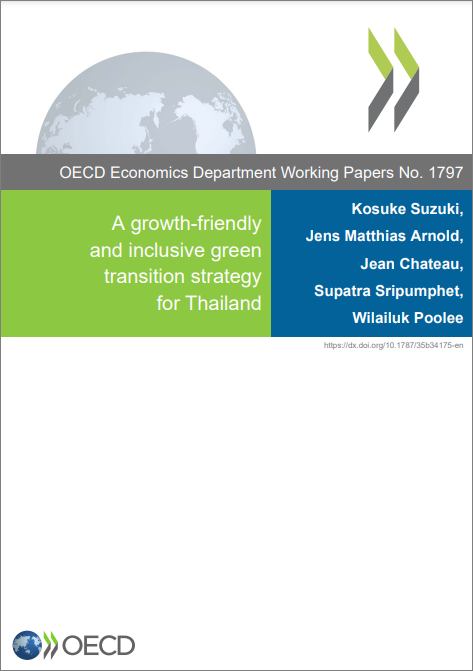
목차
Title page
Contents
Abstract 4
Résumé 4
The green transition combines opportunities and challenges 8
Achieving a coherent policy mix and ensuring strong policy coordination 12
Carbon pricing should be the key element of Thailand's decarbonisation strategy 13
Aligning environmental regulations with international good practice 19
Achieving net zero will require specific strategies for each sector 22
Decarbonising the power sector by expanding renewable energy sources 22
Reducing transport emissions 26
Reducing emissions from agriculture 32
Raising energy efficiency presents scope for emission reductions 33
Energy productivity has improved over the recent years 33
Advancing electrification can help improve energy efficiency 36
The business sector could invest more to improve energy efficiency 37
Investing in adaptation to climate change 38
Fostering green innovation 39
Direct funding and tax incentives are supporting research and development 40
Towards a more circular economy 42
References 45
Table 1.1. Main findings and recommendations 44
Figure 1.1. Thailand is committed to significant emission reductions 8
Figure 1.2. CO₂ emissions from road transport have increased rapidly 9
Figure 1.3. Energy is necessary for economic growth 9
Figure 1.4. Thailand's coal dependence is lower than in peer countries 10
Figure 1.5. Lowering energy intensity has helped contain CO₂ emissions 11
Figure 1.6. Thailand's current effective carbon prices are low 15
Figure 1.7. Energy subsidies remain in place for oil 15
Figure 1.8. Achieving net zero targets will be challenging 17
Figure 1.9. Low-income households spend relatively less on transport 18
Figure 1.10. Environmental policies are less stringent than in OECD countries, China and India 21
Figure 1.11. Renewable sources have increased in power generation 24
Figure 1.12. Thailand needs to increase the use of renewable energy sources 24
Figure 1.13. Motorisation is advancing in Southeast Asian countries 28
Figure 1.14. Energy consumption by product type 30
Figure 1.15. The electric vehicle market is still nascent in Thailand 31
Figure 1.16. Rail freight transport accounts for a small share in in Thailand 32
Figure 1.17. Industry and transport account for a large share of energy consumption 34
Figure 1.18. Energy efficiency has improved in recent years 35
Figure 1.19. Electrification has rapidly increased in the emerging Asian economies 36
Figure 1.20. Business energy efficiency has been declining and electrification has been slow 38
Figure 1.21. Thailand has rapidly increased R&D expenditure 40
Figure 1.22. R&D tax incentives are weaker than in other economies 41
Boxes
Box 1.1. The OECD ENV-Linkages modelling framework 16
Box 1.2. OECD Environmental Policy Stringency Index 20
Box 1.3. GHG emission reductions in New Zealand's agriculture sector 33
해시태그
관련자료
AI 100자 요약·번역서비스
인공지능이 자동으로 요약·번역한 내용입니다.
A growth-friendly and inclusive green transition strategy for Thailand
(태국의 성장 친화·포용적인 녹색 전환 전략)



